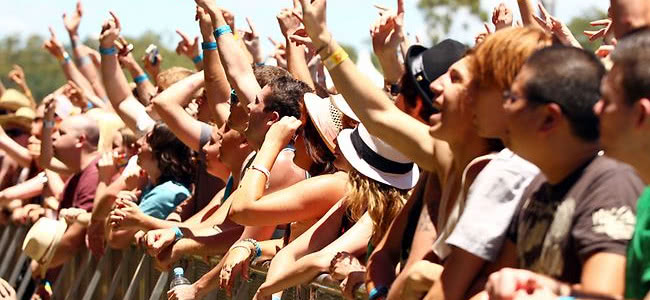The 13th Annual Helpmann Awards took place last night, recognising high achievements in the live performance industry where the likes of White Night Melbourne took home awards. But along with the celebrations comes some concerning news from the Helpmann Awards organisers that shows that revenue and attendance to live music events is down across the country.
Live Performance Australia (LPA) have released the results of their annual Ticket Attendance And Revenue Survey, the industry body’s ninth, which demonstrates that as a result of economic conditions and an increase in ticket prices, the live music industry has experienced a decline, as The Music Network reports.
The live performance sector turned over $1.2 billion, a drop of 8% from the 2011 figure of $1.3 billion, while attendance rates also experienced a drop of 6.2%, from 17.3 million to 16.2 million. But speaking to the Australian Financial Review, LPA Chief Executive Evelyn Richardson says that the figures shouldn’t provoke undue concern. “It’s not a doom-and-gloom scenario – we’re happy with these numbers,” she said; “we know our industry is not immune from changes in the economy, but at the end of the day people still like to be entertained and go out.”
Despite the overall drop in the live sector (which includes theatre, opera, classical music, circus, comedy, performing arts and so on), contemporary music – along with musical theatre – was one of the largest sectors, generating 40% of all revenue and 47.4% of total attendance rates. Live music grossed $482.1 million, down from 2011’s $539 million figure, and a total audience number of 5,484,257. “It’s not a doom-and-gloom scenario – we’re happy with these numbers.” – Evelyn Richardson, LPA
Music festivals proved to provide the biggest share of revenue and attendance rates, with the success of Splendour In The Grass, Soundwave, Future, Falls, and Stereosonic Festivals all contributing to a generated gross of $98.3 million, up 2% from last year, while attendance jumped 18.7% thanks to the huge crowds of Bluesfest and Gympie Muster, also helped by the average ticket prices for music festivals dropping by 7.4% to $128.71 (compared to 2011’s $138.97).
New South Wales and Victoria generated the biggest profits for the live music sector, bringing a revenue of $446 million (a 40.1% share) and 5.7 million tickets (a 35.6% share) in NSW and Melbourne raking in a revenue of $344.3 million (a 28.6% share) and 4.9 million tickets (a 30.2% share).
The next highest state in revenue and attendance was Queensland, turning over $183.7 million and 2.3 million sold tickets respectively, then Western Australia ($134.1m revenue and 1.7m tickets), South Australia ($73.5m and 1m tickets), ACT ($17.2m and 27,525 tickets), Tasmania, ($4.2m and 97,972 tickets), and lastly the Northern Territory ($1.4m and 43,663 tickets).
Speaking further on the overall 8% drop reported in the LPA survey, Ms Richardson tells Smart Company that “we think these drops are pretty modest and the industry is still generally stable.”
“It’s hard to crystal ball about the future, but I think it will be very much steady as she goes. We expect as consumer confidence improves, so will spending on live performance events,” she noted, adding that it was the success of drawing international acts to Australia that continued to bolster industry figures along with local performers.
Ms Richardson also applauded the Government’s pledge of spending $560,000 towards establishing a National Live Music Office as “very welcome,” while adding that regulation – particularly of radio – could play a role in stabilising industry revenue and attendance along with government support.
“One of the things that’s really important for local Australian artists is that they get airplay on Australian radio,” she concluded.

































